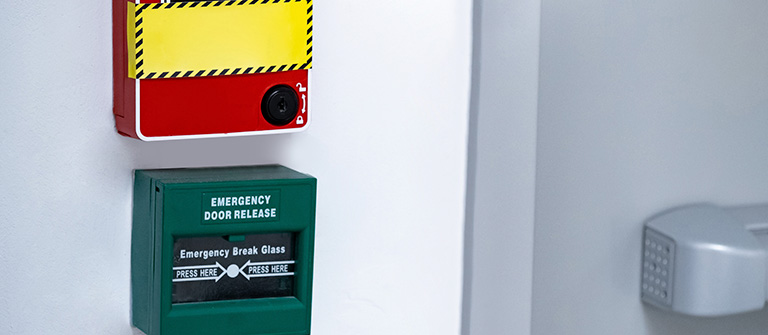Emergencies can occur in any workplace at any time. Healthcare emergencies can bring injuries or illnesses that can be devastating for some. Understanding the appropriate actions to take during these situations is crucial for the safety of all employees, providers, patients, and anyone else in the building or the surrounding area.
The best way to protect workers is to have safety protocols and measures in place before an emergency strikes. Carefully developing an action plan can guide workers when quick action is necessary and ensure everyone knows what to do if a crisis arises. Here, you can find everything you need to know about improving emergency preparedness, including OSHA requirements for workplace emergencies, how to create action plans, and where to access OSHA training for emergency preparedness.
OSHA Requirements for a Workplace Emergency
A workplace emergency can be any situation that threatens employees, patients, customers, or the public. These situations can cause environmental or physical damage and disrupt or shut down operations. Workplace emergencies in the healthcare setting can be natural or human-made and can include events like earthquakes, hurricanes, wildfires, winter weather, tornadoes, floods, and more. Other emergencies could result from the release of biological agents, chemical spills, explosions from radiological or nuclear sources, and a variety of other hazards.
Employers are responsible for creating a safe workplace for employees, including adhering to medical practice crisis management regulations. These regulations help establish effective response plans to ensure every worker understands their role in the event of an emergency. OSHA lists (Occupational) their key requirements for healthcare facility safety protocols regarding emergency response plans (ERP), including:
- Implementing the ERP in pre-emergency drills.
- Practicing sessions with local organizations that respond to emergencies.
- Establish roles and responsibilities, including who will oversee training, communication, and response direction.
- Designating a decontamination team.
- Describing the facility’s system for accessing toxic material information.
- Explaining an evacuation plan.
- Designating an alternate facility to provide treatment in the event of contamination.
- Planning the management of non-contaminated patients.
- Describing decontamination procedures and equipment.
- Selecting a decontamination area indoors or outdoors.
- Discussing the quantity and location of personal protective equipment.
- Establishing methods for preventing cross-contamination through ventilation systems and other means.
- Monitoring air quality to ensure the facility is safe after treating contaminated patients.
- Creating a post-emergency critique and drill follow-ups.
Possible Causes of Emergencies in Healthcare
As mentioned, healthcare emergencies can be natural or human-made. Either of these types of emergencies could strike at any time and in any location, furthering the need for effective and comprehensive response plans. Although some facilities may be less at risk for some environmental emergencies than others, it is imperative to have response plans that can account for any and all possible scenarios.
Natural or environmental emergencies could include events such as:
- Wildfires
- Lightning
- Hurricanes
- Earthquakes
- Tsunamis
- Floods
- Extreme heat
- Volcanoes
- Severe winter weather
- Landslides
- Major power failures
Human-made emergencies could be accidental or purposeful. These events could occur near or at the healthcare facility. These include events like:
- Terrorist attacks
- Spreading illness
- Spilling or releasing hazardous chemicals
- Releasing radioactive materials
- Cyberattacks
- Explosions
- Machinery malfunctions
- Gas releases
Both non-natural and environmental emergencies can disrupt operations and have consequences for the public. These events can lead to concerns regarding mental trauma, water or food contamination, injury, illness, and cleanup safety for workers and the community. Enhancing healthcare emergency response actions can minimize some of these adverse outcomes and provide the workplace and community with some sense of relief throughout devastating circumstances. Weak management and response plans can lead to heightened risks during emergencies, while strong emergency preparedness can better support those affected.
Creating Emergency Action Plans
Action plans organize actions during workplace emergencies, and all employers should implement these plans to create a safe workplace. Proper emergency action plans and adequate employee training can result in fewer or less severe injuries and less damage to the healthcare facility (Occupational).
These plans protect everyone’s health, and each facility should place the plan in an accessible location where all employees can review it. Emergency action plans highlight actions for different scenarios so each worker understands their role in various circumstances. The plan will also detail essential information, such as facility layout, emergency features, and structural features that could impact the execution of the response. If a facility operates with multiple worksites, each should have a unique action plan to account for unique differences in the building.
Creating these plans also involves conducting assessments to identify possible hazards in or outside the workplace. These assessments can aid in emergency plan creation by helping employers identify potential weak spots.
Many institutions opt to work with a group of representatives in the planning process for assistance in incorporating specific guidelines or requirements into their emergency action plans. Local health agencies, safety officials, and management workers can provide additional information about relevant threats and how to respond to them.
Strengthening Emergency Preparedness
OSHA aims to protect workers from hazards that can arise in the workplace, and remaining OSHA-compliant is essential for strengthening emergency preparedness. Healthcare professionals often have close contact with sick patients and experience unpredictable workplace events, which can increase their risk of injury or illness. Specific OSHA safety standards and regular inspections help identify these risks and improve worker safety. When you need a simple way to maintain OSHA compliance, you can rely on Rectangle Health to deliver the comprehensive materials you need.
Rectangle Health offers OSHA assessments so you can identify and fill your compliance gaps. Regulations change frequently, and accessing expertise from those who understand every detail can ensure you stay ahead of developments. Additionally, employees can submit anonymous complaints that can lead to unexpected inspector visits. Staying up-to-date on all essential information can ensure you meet the latest regulations and resolve safety issues before you face inspections.
Training requirements can also vary by state and particular medical professions. OSHA has two main healthcare training requirements — the Bloodborne Pathogens Standard and the Hazard Communication Standard. Some facilities will need additional training to maintain compliance. For instance, institutions with X-ray equipment may require additional training to adhere to the Ionizing Radiation Standard. Regardless of your unique needs, Rectangle Health can help you achieve compliance.
Ensure OSHA Compliance Rectangle Health
At Rectangle Health, security is our priority. We’ve pioneered technology over the last three decades to empower healthcare institutions to operate more efficiently. We provide unrivaled solutions to healthcare professionals, allowing us to serve the evolving needs of the industry.
Our OSHA Compliance solution empowers facilities to stay up-to-date on current protection plans and training protocols to maintain compliance and keep workers safe. With us, it’s easy to simplify processes and find reliable tools and materials. Ensure compliance with OSHA and healthcare emergencies by connecting with our team. Request a demo to see our solution in action. We look forward to simplifying the business side of healthcare for your facility with you.



